On top of managing blood sugar levels, people with diabetes have to pay close attention to their feet day in and day out. This is because diabetes often leads to nerve damage (neuropathy), which causes weakness, numbness, and pain in the feet. Because of this, diabetics are prone to foot injuries and other foot-related issues. What’s more, neuropathy reduces blood flow, making it difficult for wounds to heal. Thus, foot care is vital if you are diabetic.
That being said, it’s not as scary or troublesome as it may sound. By using preventative measures, you can keep your feet happy and healthy, permanently. Simply follow these 9 essential diabetes foot care tips and all will be well.
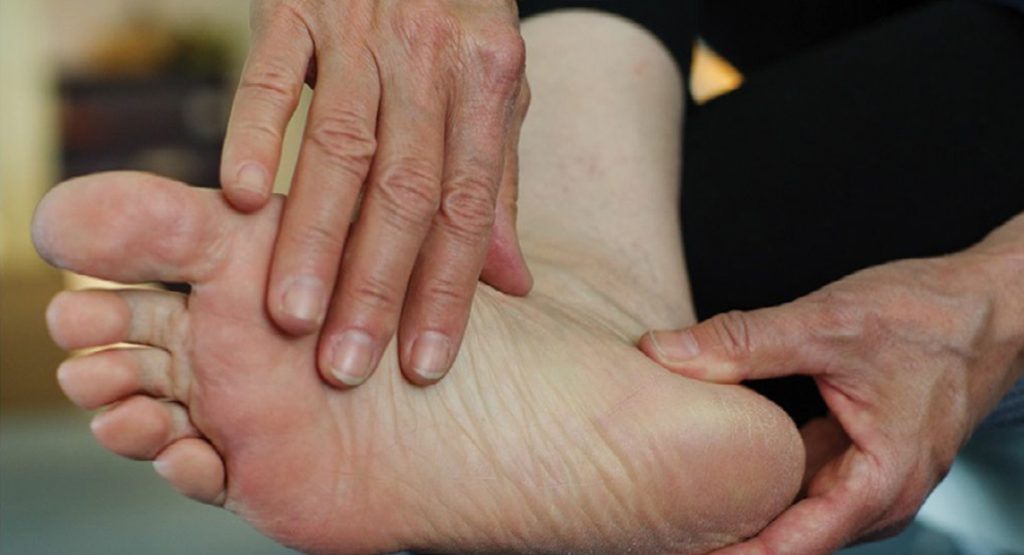
TOP 9 DIABETES FOOT CARE TIPS
We’ve compiled our most important foot care tips for diabetics. All you have to do is stick to this diabetes foot care guideline and you will avoid any serious problems.
Tip 1: Get a Comprehensive Foot Exam by a Podiatrist
First and foremost, you should make an appointment with your local podiatrist. Podiatrists specialize in diabetic foot care and neuropathy. So, they are the best doctor to see when it comes to keeping your feet healthy and protected. They will provide the correct treatment and equip you with everything you need for proper foot care.
From there, people with diabetes should visit a podiatrist every 3 to 6 months for a thorough examination. You should also see your podiatrist whenever you have any issues with your feet.
All in all, a podiatrist will be the ultimate source of inspiration and ideas for taking good care of your feet. They will also help you address diabetes on a holistic level, which includes things like blood sugar levels, body weight, and other measures of health.
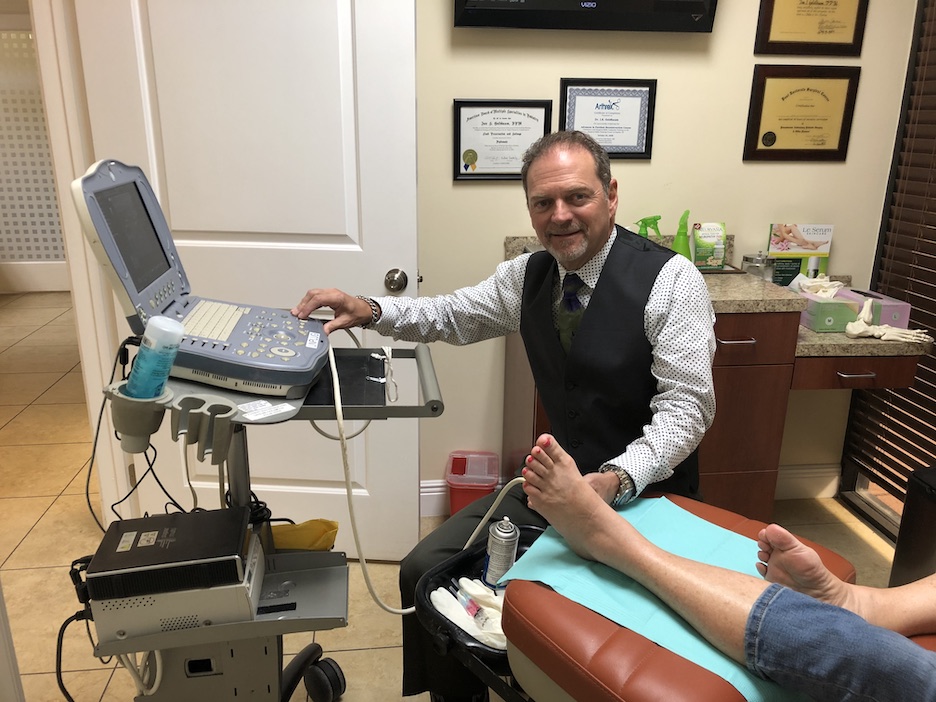
Tip 2: Inspect Your Feet Daily
70% of diabetic patients have neuropathy, which is nerve damage in the extremities. One of the major concerns of nerve damage in the feet is that you can’t feel sores, cracks, heat/cold or pain.
This is why diabetic patients should do daily foot inspections.
You should check for:
- Cuts, blisters, ulcers, and ingrown nails
- Pain, swelling, and signs of infections
- Change in temperature and color (i.e. hot or cold and pale, red or blue feet)
- Rashers or athletes foot
- Corns and calluses
- Cracking skin
Be sure to inspect carefully, both the tops and bottoms of your feet. If you can’t see the bottom of your feet, ask someone to help you or use a mirror.
If you spot any problems, be sure to call your podiatrist straight away. Moreover, do NOT try to handle the issue on your own. Simply put a bandage on your foot if needed and wear a comfortable pair of shoes until you are able to see your podiatrist.
Tip 3: Visit a Podiatrist If You Develop Any Foot-Related Injuries & Don’t Do Self-Treatment
Diabetes leaves you at a higher risk of blisters, ulcers, calluses, corns, and bunions. This is because nerve damage can cause the shape and size of your feet to change. When your feet change but your shoes don’t, it leads to friction, which results in injuries.
What’s more, diabetes causes blood vessels to shrink and harden. This makes it difficult for your feet to defend against infection.
Don’t wait for a minor foot problem to become serious. High blood sugar levels can cause minor injuries to become serious and even disabling infections. So, do not take any chances by self-treating foot injuries. Visit your podiatrist for appropriate treatment.

Tip 4: Moisturize & Wash and Dry Your Feet Daily
Many people with diabetes experience dry skin on their feet. This is caused by neuropathy, as the disabled nerves in your feet can’t properly receive messages from the brain to sweat.
Dry, cracked skin on your feel may cause germs to enter, which can lead to infection.
To combat dry skin, you can apply lotion to your feet. When moisturizing, just apply it to the tops and bottoms of your feet, not in-between the toes. The tight spaces between your toes can promote fungal infections.
Now, a lot of people soak their feet in water when they have dry skin. This should not be done as it can make your skin even more vulnerable, fragile and susceptible to infection.
So, you don’t want your skin too dry or too soft. You want to keep a happy medium. It’s not as difficult to manage this as it may sounds. All you have to do is apply some moisturizer after a shower or bath, which leads us to our next point…
Wash and dry your feet daily. Be gentle, but clean your feet thoroughly each day. Use mild soaps and warm water. Then pat them dry after your shower. Be gentle.
If you take a bath, be sure to check the temperature with your elbow and not your feet as you may not be able to correctly gauge the temperature, thus burning your feet when you step in.
That’s about it. It’s pretty easy to take care of your feet if you do it daily. Make it a habit…
What about sweaty feet?
In contrast to the point above about dry skin, some people with diabetes have excessive sweating in their feet. If this is the case, we recommend that you use some antiperspirant on the soles of your feet. You can put them in your socks and your shoes. Be sure to check with your podiatrist, as you want to avoid any allergic reactions. Your podiatrist will be able to provide you a specific product for this.
Tip 5: Wear the Right Sock and Shoes
Footwear is a major factor in maintaining healthy feet & diabetic foot care.
Let’s start with tips on socks for diabetics…
Wear white, natural fiber socks, such as cotton or wool. Avoid colored socks as they contain dyes. Furthermore, always wear clean, dry socks. Never reuse socks that you’ve worn the previous day. And if a pair of socks has a hole in them, toss them.
If your feet are cold at night, wear clean, dry socks to bed. Don’t use heating pads or devices. If anything was to go wrong, you may not be able to feel it.
Pro Tip: Get socks made specifically for people with diabetes. You can contact us if you’d like to learn more and get yourself some of these special socks. They provide more cushion, they are above the ankle, and they don’t have elastic tops or seams. Moreover, they are made from acrylic fiber, which is all-natural and controls moisture very well.
Now onto tips for shoes…
You want to make sure you are wearing comfortable, supportive, protective shoes.
Avoid open-toe footwear, high heels, and of course, going barefoot.
Note: If you are at the beach, wear some water shoes and if you are at the pool, it’s ok to wear flip flops if you are very careful.
What to look for in shoes:
- Closed toes and heels
- The bottom sole of the shoe is made of stiff material yet shock absorbing as well
- Hard toes
- Leather and natural fiber uppers
- No seam inside the shoes
- Inside of the shoe is soft and doesn’t have rough areas
- Shoes that you won’t have to break-in
- Shoes with laces so you can loosen and tighten
- Comfortable shoes
What’s more, you want shoes that will protect your feet from weather conditions. If you live in a cold climate, get shoes appropriate for the temperature.
Making sure your shoes fit!
It’s always smart to go to a shoe store so you can have staff measure your feet. Be sure to measure both feet!
Avoid shopping online as you may find the actual sizes vary and they don’t fit properly.
Go for shoes that offer you a 1/2 inch to 5/8 inch between the front to your longest toe. Be sure the arch of your foot is supported and the bend/break of the shoe is at the ball of your foot.
All in all, you don’t want your shoes too narrow and you don’t want your shoes pressing against your toes. Your feet should be able to move and breathe.
Pro Tips:
1. We Highly Recommend Orthotics: They are prescription, custom insoles that offer far superior comfort and support. Orthotics fight off pain of the foot, ankle and leg. What’s more, they even help to correct abnormalities in pronation and supination.
2. Diabetic Shoes (Extra Depth Shoes): These are also essential for diabetics with poor circulation, neuropathy and foot deformities. They provide the ultimate protection and comfort, and they help to correct abnormalities.
Contact us about diabetic shoe coverage and orthotics.
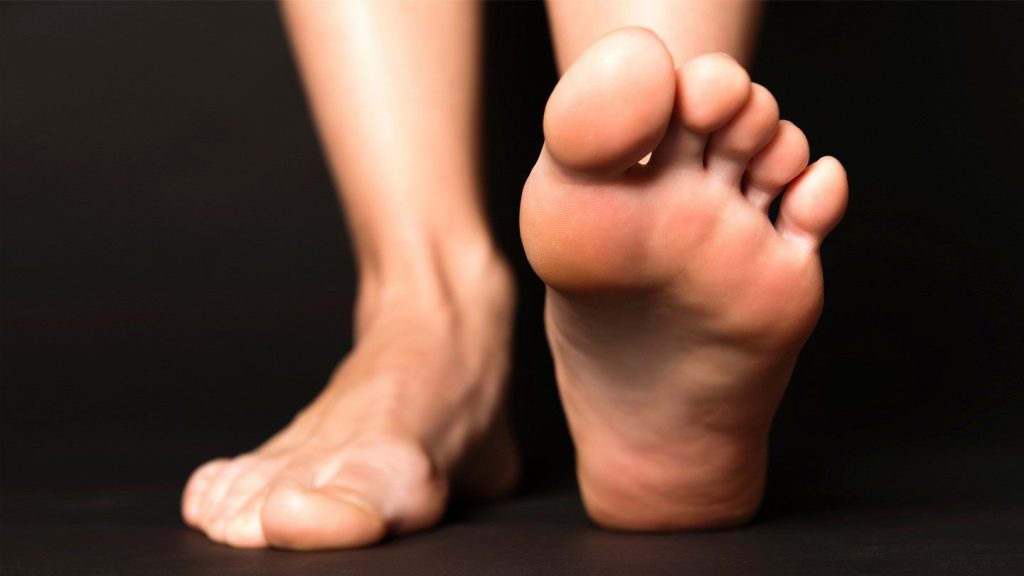
Tip 6: Never Walk Barefoot
Always wear shoes or slippers, even in your home! You want to protect your feet as you could step on something and scratch or cut your foot without even knowing.
But what about the beach? Unfortunately, this also applies to the beach. In fact, it especially applies to the beach as you could easily step on something sharp without seeing it.
Remember to wear clean and dry socks every day. Never reuse socks. Also, shake out your shoes and feel inside before putting them on. Better to be safe than sorry and unaware!
Tip 7: Take Care of Your Toenails
Be sure to take good care of your toenails. Cut them after a shower or bath as that’s when they are soft. You should cut them straight across, as to avoid cutting into the corners of your toes. And don’t cut cuticles! After you cut your toenails, smooth them out with a nail file gently.
Make sure you don’t cut your nails too short, as this is a common cause of ingrown toenails.
If you can’t adequately see or reach your toenails, visit your podiatrist to have them trimmed. This may seem like an unnecessary thing to ask your podiatrist to help you with, but this is a very common foot care duty that podiatrists do for their diabetic patients. Big or small, your podiatrist will be there for you. So, don’t be shy.
Tip 8: Stay Active
Staying active is beneficial for those with diabetes. It can help reduce blood sugar and cholesterol levels. This helps improve blood flow to your feet.
Walking and swimming are two great types of workouts you can do. Whatever activity you decide on, make sure you choose the right shoes and always be careful.
If you want to try exercises that are more “high impact”, such as jumping, running, bouncing, first consult with your podiatrist.
Another thing you should do is wiggle your toes and move your feet around every few hours.
On a side note, refrain from crossing your legs when you sit and elevate your feet when sitting or sleeping if you are prone to swelling of the feet.
Tip 9: Manage your diabetes
Managing your diabetes is one of the most important tips we can give you. In fact, it’s probably top of the list. So, always keep your blood glucose within the target range and your A1C within normal limits. The best way to do this is by working with your podiatrist.
Furthermore, if you smoke, you should quit as quickly as you can. Smoking cigarettes will damage and contract your blood vessels, depriving your feet of essential nutrients and oxygen-rich blood. Two very important components of healthy, infection-free feet.
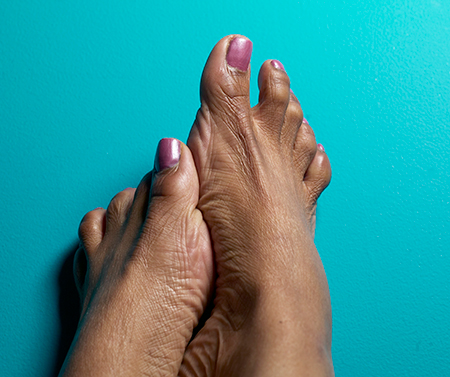
WHEN TO TALK TO YOUR DOCTOR
Pay your podiatrist a visit immediately if you have any of the following problems:
- Athlete’s foot (cracking between the toes/fungal infection)
- Any sores or wounds on your feet (blisters, cuts, etc.)
- Increasing numbness or pain
- Ingrown toenails
- Redness
- Blackening of skin
- Bunions
- Hammer toe
- Signs of Infection
- Calluses
Closing note:
As scary as some of this may sounds, if you follow these diabetes foot care tips, you have nothing to worry about and you can keep your feet happy and healthy.
If you’d like products specifically for diabetic foot care, then please feel free to contact us.
Have questions foot care tips for diabetes? Leave a comment below! Also, leave a comment if you have your own tips for diabetes foot care.
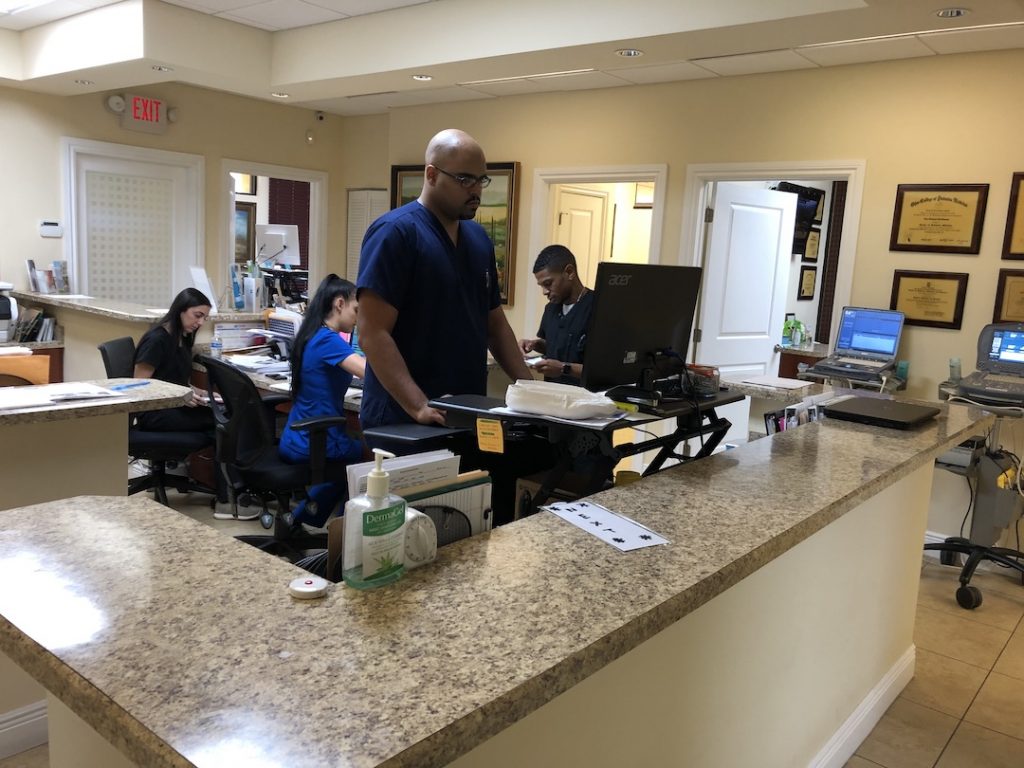

No responses yet